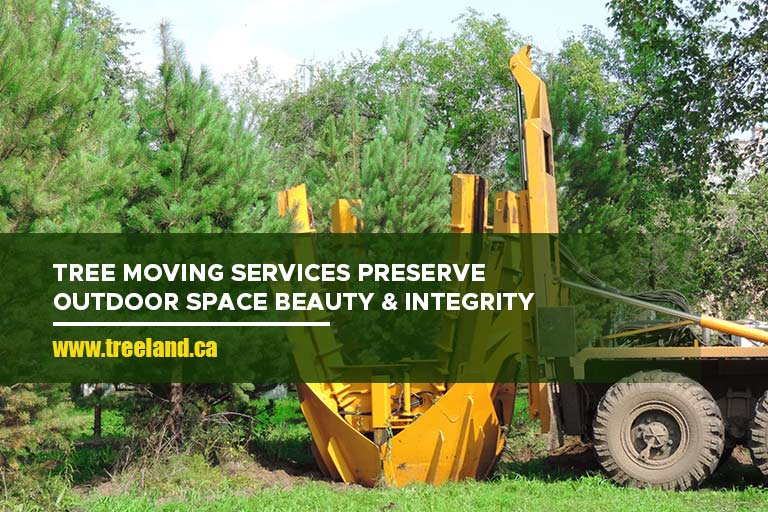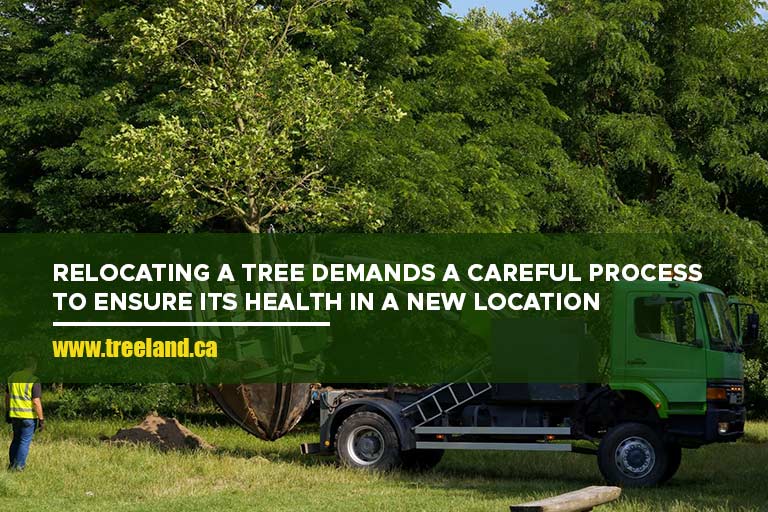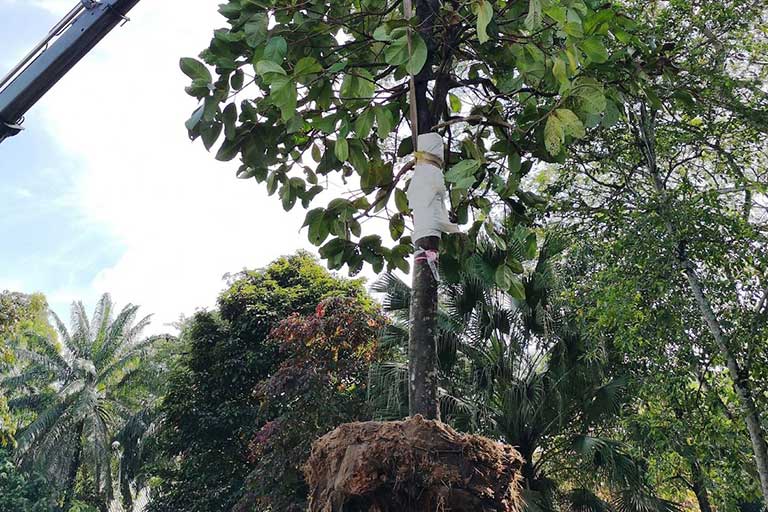Trees are essential for beautifying and creating peaceful surroundings in the residential properties of the Greater Toronto Area (GTA). Their majestic presence not only adds aesthetic value but also contributes to environmental sustainability and personal well-being. As homeowners adjust their outdoor spaces over time to reflect changing needs and preferences, they may encounter situations where relocating a tree becomes necessary. This could be due to various factors such as landscaping renovations, construction projects, or simply the desire to optimize the layout of their outdoor environment.
Signs That Your Tree Needs to be Moved
Trees add beauty, shade, and tranquillity to outdoor spaces. They serve as natural focal points, providing a sense of serenity and connection to the environment. However, despite their many benefits, there are times when homeowners may need to consider relocating a tree.
Whether it’s to accommodate new landscaping features, prevent property damage, or preserve valuable specimens during construction projects, the decision to move a tree requires careful consideration.
-
Limited Space
-
- The tree’s canopy is encroaching upon structures or other trees, risking damage during storms or high winds.
- Roots are causing damage to sidewalks, driveways, or foundations, leading to safety hazards and costly repairs.
-
Landscaping Changes
-
- You are redesigning your outdoor space and need to reposition trees to accommodate new features such as patios, decks, or swimming pools.
- The current location of the tree disrupts the flow of your landscape design, blocking views or creating obstacles.
-
Construction Projects
-
- Upcoming construction or renovation projects threaten the tree’s survival due to excavation or changes in grading.
- You want to preserve valuable trees amidst development plans to maintain the natural beauty and ecological balance of your property.
-
Root Encroachment
-
- Tree roots are invading underground utilities, such as water pipes or sewer lines, causing blockages or damage.
- The tree’s roots are competing with nearby plants for water and nutrients, leading to stunted growth or decline in surrounding vegetation.
-
Sunlight Limitations
-
- The tree’s current location results in shade or obstructs sunlight from reaching other plants or areas of your property.
- Limited sunlight may be hindering the growth of grass, flowers, or vegetables in the vicinity of the tree.
-
Safety Concerns
-
- The tree poses a safety hazard due to its proximity to power lines, posing a risk of electrical outages or fire hazards during storms.
- Overgrown branches or limbs threaten to fall on structures, vehicles, or pedestrians, increasing the risk of property damage or personal injury.
-
Aesthetic Preferences
-
- Changes in aesthetic preferences or landscape design goals prompt the need to relocate trees to achieve a desired visual effect.
- You wish to create a more symmetrical or balanced look in your outdoor space by repositioning trees or adjusting their spacing.
Benefits of Tree Moving Services

While trees are integral to the charm and allure of residential landscapes in the GTA, there are circumstances where relocating a tree becomes necessary. In such instances, tree moving services offer a solution to preserve the beauty and integrity of your outdoor space.
Let’s delve into the benefits of tree moving services and explore how they can enhance your property’s aesthetics, environmental impact, and overall appeal.
-
Preserve Valuable Trees
-
- Relocating trees allows you to save mature specimens that may otherwise be removed, preserving their beauty and ecosystem services.
- It preserves the history and character of your property while adding value to your landscape, enhancing its appeal to potential buyers.
-
Enhance Property Aesthetics
-
- Tree relocation can transform the visual appeal of your property by optimizing tree placement to create focal points, frame views, or provide shade in strategic areas.
- Properly positioned trees enhance curb appeal, making your property more attractive and inviting.
-
Environmental Conservation
-
- Tree moving services promote sustainability by minimizing tree removal and preserving green spaces, contributing to urban forestry initiatives and climate resilience.
- It supports local biodiversity by maintaining habitat for birds, insects, and other wildlife, fostering a healthier ecosystem in your community.
The Tree Moving Process

Moving a tree requires a well-planned process to ensure it’s relocated successfully and remains healthy in its new home. From initial assessment to post-replanting care, each stage plays a crucial role in safeguarding the tree’s health and viability in its new environment.
Let’s explore the details of the tree moving process and understand important factors at every step.
-
Assessment
-
- Evaluate the health, size, and condition of the tree to determine its suitability for relocation.
- Consider factors such as soil quality, sunlight exposure, and root structure to identify potential challenges and minimize risks.
-
Preparing the Tree
-
- Prune excess branches to reduce stress during transportation and promote healthy regrowth after replanting.
- Secure the root ball with burlap and wire baskets to protect the roots and minimize root damage during relocation.
-
Moving the Tree
-
- Utilize specialized equipment, such as tree spades and cranes for safe and efficient relocation, ensuring minimal disruption to the tree and surrounding landscape.
- Transport the tree to its new location carefully, taking precautions to prevent injury to the tree and damage to property or infrastructure.
-
Replanting and Care
-
- Dig a hole of appropriate size and depth for the tree’s root ball, ensuring proper soil preparation and drainage to support healthy growth.
- Provide adequate water, nutrients, and mulch to promote root establishment and minimize transplant shock, monitoring the tree’s condition closely in the weeks following relocation.
Choosing the Right Tree Moving Service
Selecting the appropriate tree moving service is a critical decision that can significantly impact the success of your tree relocation project. With numerous factors to consider, finding the right service provider requires careful deliberation.
-
Experience and Expertise
-
- Look for a company with a proven track record in tree relocation, preferably with experience in handling similar tree species and site conditions.
- Ensure the team is knowledgeable about local regulations and best practices for tree care and relocation to avoid potential complications or legal issues.
-
Equipment and Techniques
-
- Opt for a service provider equipped with state-of-the-art machinery and innovative techniques for tree moving, such as pneumatic tree spades or hydraulic tree transplanters.
- Verify that the company adheres to industry standards for tree care and relocation, including proper lifting and handling techniques to minimize stress on the tree.
-
Reputation and Reviews
-
- Research online reviews and testimonials from previous clients to gauge the company’s reputation for quality workmanship and customer satisfaction.
- Seek recommendations from friends, neighbours, or local landscaping professionals who have experience with tree moving services, ensuring you choose a trusted and reliable provider.
As a homeowner in the GTA, recognizing the signs that indicate the need for tree moving services can help you preserve the beauty and integrity of your landscape. By leveraging the benefits of tree relocation, you can enhance the aesthetics of your property, protect valuable trees, and contribute to environmental conservation efforts. When considering tree moving services, it’s essential to choose a reputable and experienced provider like Caledon Treeland.
Contact us at 905-880-1828 to learn more about our services in tree moving in the GTA and take the first step towards transforming your outdoor space.

